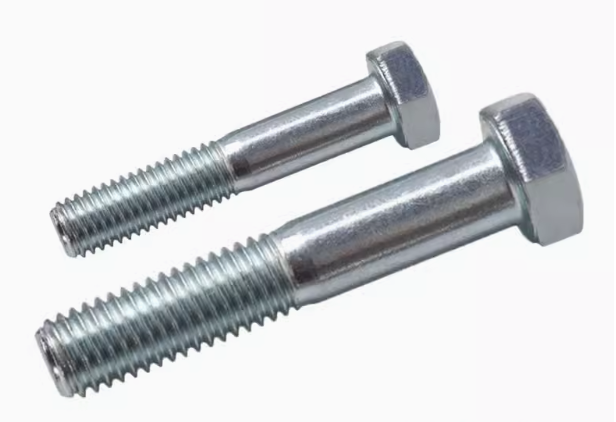Galvanizing
Characteristics:
Zinc is relatively stable in dry air and is not easily discolored. In water and humid environments, it reacts with oxygen or carbon dioxide to form oxide or alkaline zinc carbonate films, which can prevent zinc from continuing to oxidize and provide protection.
Zinc is highly susceptible to corrosion in acids, alkalis, and sulfides. The galvanized layer generally needs to undergo passivation treatment. After passivation in chromic acid or chromate solution, the formed passivation film is not easily exposed to humid air, greatly enhancing its anti-corrosion ability. For spring parts, thin-walled parts (wall thickness<0.5m), and steel parts that require high mechanical strength, hydrogen removal must be carried out, while copper and copper alloy parts may not require hydrogen removal.
Galvanizing has low cost, easy processing, and good effect. The standard potential of zinc is relatively negative, so zinc coating is an anodic coating for many metals.
Galvanization is widely used in atmospheric conditions and other favorable environments. But it is not suitable for use as a friction component.
Chrome plating
Characteristics: For parts that come into contact with oceanic atmosphere or seawater, and in hot water above 70 ℃, cadmium plating is relatively stable, has strong corrosion resistance, good lubrication, and dissolves slowly in dilute hydrochloric acid, but is highly soluble in nitric acid and insoluble in alkali. Its oxide is also insoluble in water. Cadmium coating is softer than zinc coating, with less hydrogen embrittlement and stronger adhesion.
Moreover, under certain electrolytic conditions, the cadmium coating obtained is more aesthetically pleasing than zinc coating. But the gas produced by cadmium during melting is toxic, and soluble cadmium salts are also toxic. Under normal conditions, cadmium acts as a cathodic coating on steel and as an anodic coating in oceanic and high-temperature atmospheres.
It is mainly used to protect parts from atmospheric corrosion caused by seawater or similar salt solutions, as well as saturated seawater vapor. Many parts in the aviation, maritime, and electronic industries, springs, and threaded parts are plated with cadmium. It can be polished, phosphated, and used as a paint base, but cannot be used as a utensil.
Chromium plating
characteristics:
Chromium is very stable in humid atmospheres, alkaline, nitric acid, sulfide, carbonate solutions, and organic acids, and is easily soluble in hydrochloric acid and hot concentrated sulfuric acid. Under the action of direct current, if the chromium layer serves as the anode, it is easily soluble in caustic soda solution.
The chromium layer has strong adhesion, high hardness, 800-1000V, good wear resistance, strong light reflection, and high heat resistance. It does not change color below 480 ℃, begins to oxidize above 500 ℃, and significantly decreases hardness at 700 ℃. Its disadvantage is that chromium is hard, brittle, and prone to detachment, especially when subjected to alternating impact loads. And it has porosity.
Chromium metal is prone to passivation in air, resulting in the formation of a passivation film and thus changing the potential of chromium. Therefore, chromium becomes a cathodic coating on iron.
It is not ideal to apply direct chrome plating as an anti-corrosion layer on the surface of steel parts. Generally, multi-layer electroplating (i.e. copper plating → nickel plating → chromium plating) is required to achieve the purpose of rust
prevention and decoration. Currently widely used in improving the wear resistance of parts, repairing dimensions, light reflection, and decorative lighting.
Nickel plating
characteristics:
Nickel has good chemical stability in the atmosphere and alkaline solution, is not easily discolored, and is only oxidized at temperatures above 600 ° C. It dissolves slowly in sulfuric acid and hydrochloric acid, but is easily soluble in dilute nitric acid. It is easily passivated in concentrated nitric acid and therefore has good corrosion resistance.
Nickel plating has high hardness, is easy to polish, has high light reflectivity, and can increase aesthetics. Its disadvantage is that it has porosity. To overcome this disadvantage, multi-layer metal coatings can be used, with nickel as the intermediate layer.
Nickel is a cathodic coating for iron and an anodic coating for copper.
It is commonly used to protect decorative coatings in order to prevent corrosion and increase aesthetic appeal. Nickel plating on copper products is ideal for corrosion prevention, but due to the high value of nickel, copper tin alloys are often used instead of nickel plating.
Post time: Nov-14-2024







